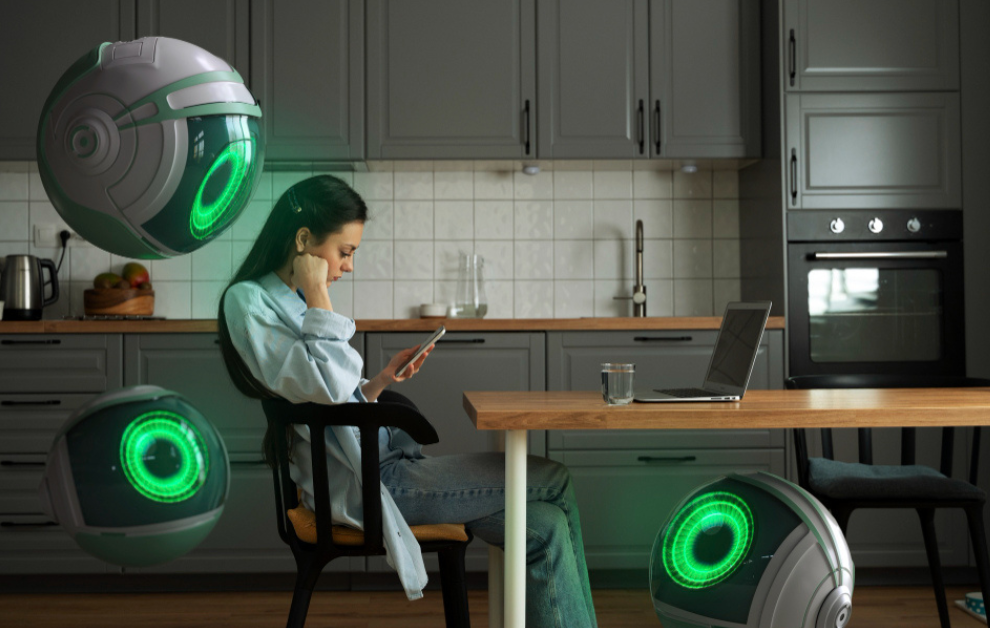How Artificial Intelligence is Transforming Kitchen Design

Imagine walking into a kitchen that adjusts the lighting based on your mood offers recipe suggestions tailored to your pantry contents and even alerts you when your milk is about to expire. This isn’t a futuristic dream. It’s the reality of artificial intelligence kitchen design. AI is revolutionizing how we design build and interact with kitchens creating spaces that are as intelligent as they are functional.
In this comprehensive guide, we’ll explore the depths of AI-powered kitchen design, the benefits, challenges and real life examples of its application along with actionable steps to integrate it into your home.
What is Artificial Intelligence Kitchen Design?
Artificial intelligence in kitchen design refers to the integration of AI technologies to create smarter more efficient and highly personalized cooking spaces. This can range from smart appliances and predictive algorithms to advanced design software that optimizes layouts based on user needs.
At its core, AI in kitchen design blends functionality with innovation. It utilizes machine learning, IoT (Internet of Things) and automation to enhance everything from storage solutions to cooking assistance.
Key features include:
- Smart appliances like AI enabled ovens and refrigerators.
- Design optimization tools that adapt layouts for better space utilization.
- Personalized user interfaces that learn individual cooking habits.
Benefits of Artificial Intelligence in Kitchen Design

Enhanced Personalization
- AI algorithms analyze your habits to recommend layouts, appliances and even recipes tailored to your lifestyle.
- Adaptive features like lighting and temperature controls create a comfortable and personalized environment.
Improved Space Utilization
- AI design tools maximize storage space by suggesting modular cabinets and multi-functional furniture.
- Smart shelving systems that adjust to fit items of various sizes.
Sustainability and Energy Efficiency
- Appliances use AI to optimize energy consumption.
- AI-driven fridges track expiration dates reducing food waste.
Convenience and Automation
- Voice-activated assistants help with timers recipes and grocery lists.
- Automated systems manage inventory notifying you when items run low.
Also Read: Artificial Intelligence Costumes
Applications of Artificial Intelligence in Kitchen Design
Smart Appliances: From refrigerators that suggest meal ideas based on contents to ovens that automatically adjust cooking times, smart appliances are at the forefront of AI kitchen design.
Examples include:
- Samsung Family Hub Refrigerator: Tracks inventory and connects with other smart devices.
- Tovala Smart Oven: Scans meal kits and adjusts cooking settings accordingly.
Virtual Kitchen Design Tools: AI powered platforms like IKEA’s Kitchen Planner allow homeowners to visualize and customize their kitchens in real time.
These tools:
- Suggest optimal layouts based on room dimensions.
- Offer realistic 3D renderings for better decision making.
Predictive Technology: Predictive algorithms learn cooking patterns to make recommendations such as:
- Suggesting recipes based on frequently used ingredients.
- Scheduling maintenance for appliances before they break down.
Personalized Smart Displays: Interactive displays like Google Nest Hub provide real-time cooking guidance, nutrition tracking and smart home integration.
| Feature | Example Use Case |
|---|---|
| Recipe Suggestions | Displaying step by step instructions. |
| Nutritional Analysis | Offering calorie counts for meal options. |
| Appliance Integration | Controlling devices with voice commands. |
Challenges of AI in Kitchen Design
High Initial Costs: Investing in AI enabled appliances and systems can be expensive though costs are decreasing as technology advances.
Privacy Concerns: AI systems collect data to optimize functionality raising questions about security and data use.
Learning Curve: Users must adapt to new technology which may include troubleshooting or learning advanced features.
The Future of Artificial Intelligence Kitchen Design
AI is rapidly evolving promising even more exciting advancements in the world of kitchen design.

AI Powered Sustainability: Future kitchens will focus on eco-friendly materials and energy-efficient appliances, using AI to minimize environmental impact.
Integration with AR/VR: Augmented reality will allow homeowners to visualize and modify kitchen designs in real-time offering unmatched customization.
Fully Autonomous Kitchens: Imagine a robotic chef preparing your meals with precision. Companies like Moley Robotics are already developing such technologies, paving the way for fully automated kitchens.
Real Life Examples of AI in Kitchen Design
Samsung SmartThings Kitchen: This system integrates smart appliances to streamline cooking and meal planning. Features include guided cooking and personalized recommendations.
Moley Robotics Kitchen: A fully robotic kitchen that can cook over 5,000 recipes demonstrating the potential of AI driven automation.
Google Nest-Powered Smart Kitchens: By connecting various smart devices Google Nest creates a seamless kitchen experience from voice controlled ovens to energy efficient lighting.
How to Incorporate AI in Your Kitchen Design
Assess Your Needs: Identify priorities like storage, energy efficiency or automation.
Choose the Right Appliances: Invest in appliances that align with your cooking habits.
For example:
- Smart refrigerators for grocery management.
- AI-enabled ovens for precision cooking.
Utilize AI Design Tools: Use platforms like Houzz or IKEA’s Kitchen Planner to visualize layouts.
Work with Experts: Partner with designers familiar with AI integration to ensure a seamless setup.
Conclusion
Artificial intelligence kitchen design is transforming how we cook, organize and interact with our culinary spaces. By blending technology with innovation, AI creates kitchens that are not only smarter but also more efficient and sustainable.
Read Also: Church Tech Team Page




